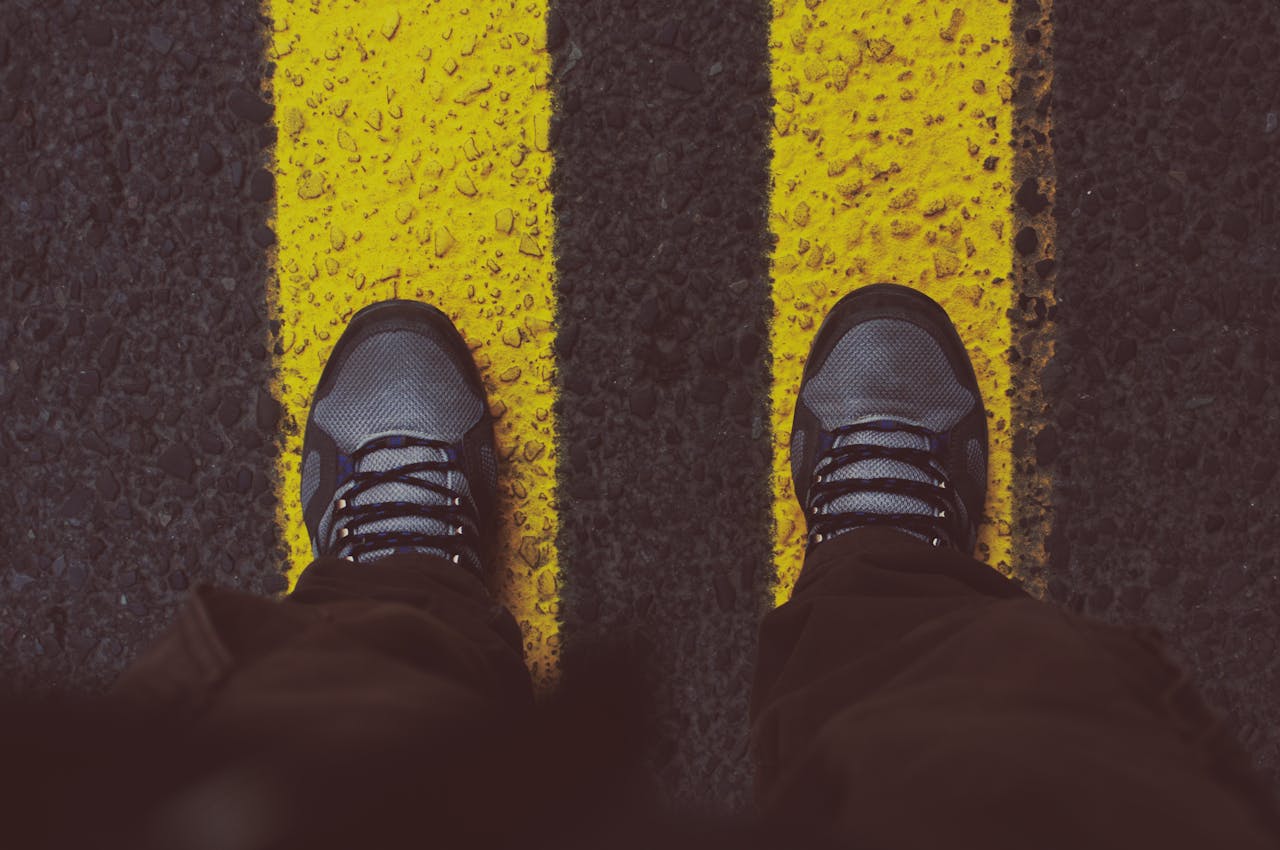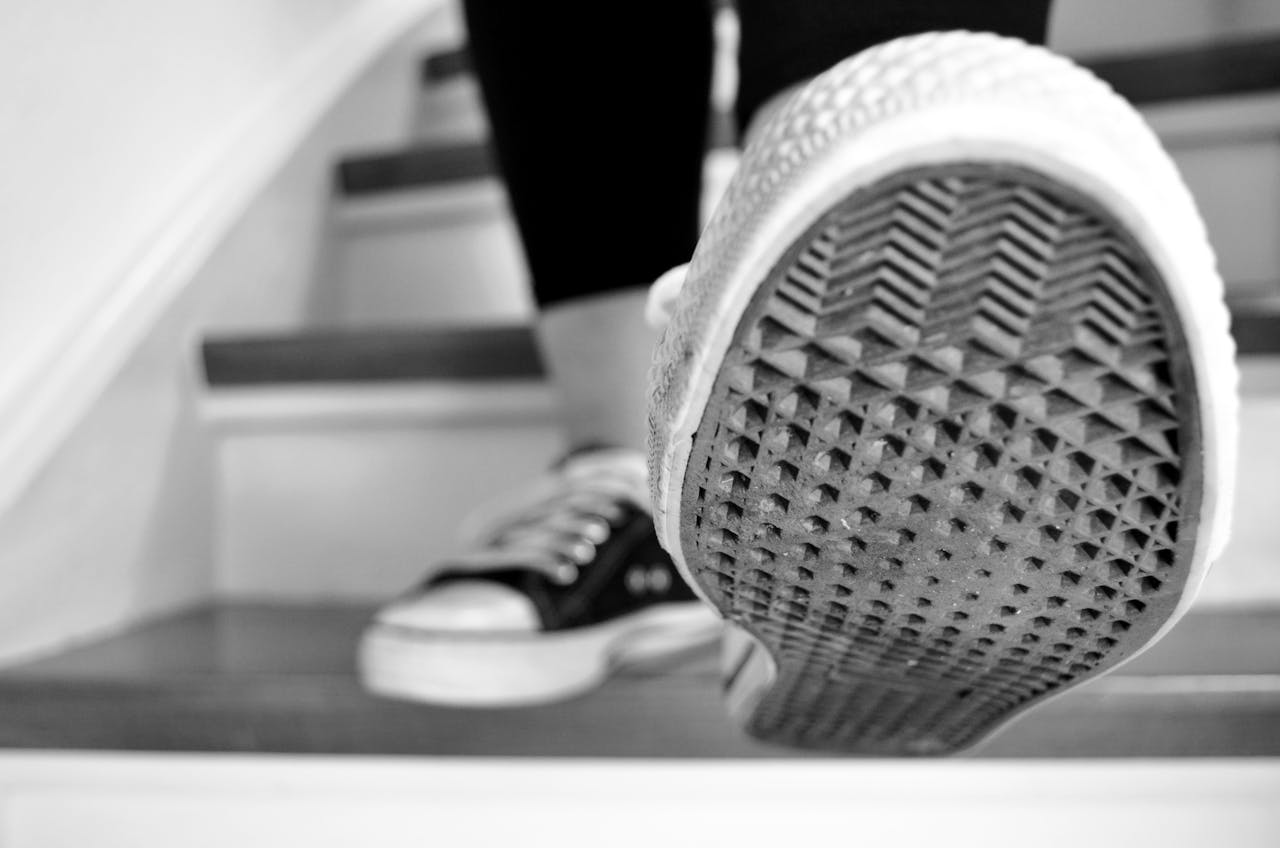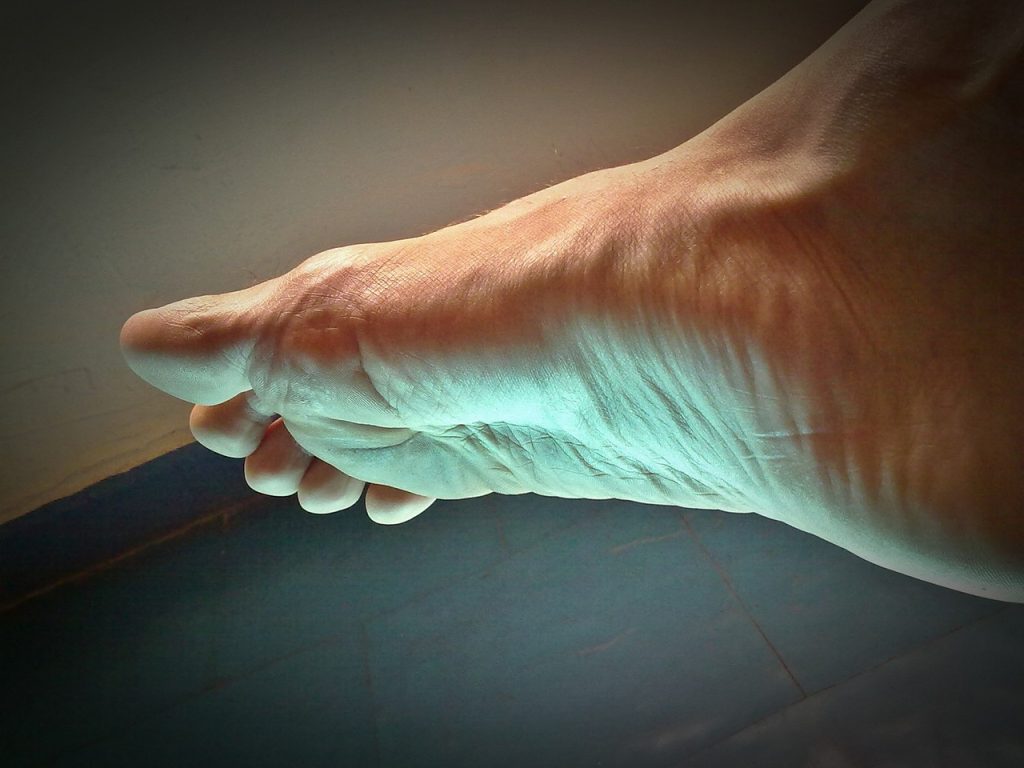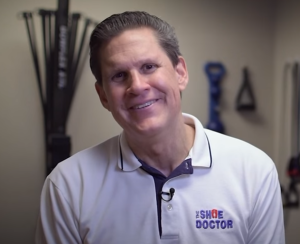Why athletes are switching to 3D-mapped orthotics. These custom inserts provide a more precise fit and reduce injury risk. With 3D mapping, your feet get scanned so the orthotics fit your shape and movement, not just your shoe size. Translation: more comfort, more support, and less strain during practice or play. While standard insoles tend to gloss over small pressure points, 3D-mapped ones identify and address them. That’s why more and more sports pros are turning to this tech to help with foot pain, increase performance, and accelerate recovery. For you, this switch means less guesswork and more comfort with every step. To aid your vision of whether 3D-mapped orthotics are a fit for you, the following sections explain how they operate and what to anticipate.
Key Takeaways
- Experience an athlete’s edge with 3D-mapped orthotics that deliver unmatched precision in fit, support, and alignment.
- Custom orthotics designed with advanced scanning and data-driven analysis tackle your unique biomechanical needs, minimize your injury risk, and promote faster recovery.
- With modern 3D technology, orthotics can be customized to unique sports so you get precise support when you’re running, playing soccer, or anything in between.
- By integrating innovative lightweight, durable materials, we ensure your orthotics stay comfortable and resilient even in high-demand, high-impact athletic arenas.
- When compared to conventional insoles, 3D orthotics provide increased satisfaction, accuracy, and customization, offering a significant advantage in comfort and competition.
- In other words, by embracing 3D mapping and smart tech, you’re preparing for the future where bespoke shoes are the norm, enhancing both your performance and foot health.

Why Athletes Demand 3D Orthotics
You want to keep moving and stay on top of your game. 3D-mapped orthotics help you arrive. With these, you get a fit that matches your feet, not the generic foot. At the end of the day, it’s a goal of a custom fit that keeps you steady, comfortable, and primed to perform. Whether you’re training for a race, playing football, or simply aiming to stay injury-free, this tech truly counts.
Benefits of custom orthotics for athletes:
- Assist in preventing injuries such as plantar fasciitis, shin splints, and stress fractures.
- Give support for flat feet or other foot problems
- Improve comfort during long training and tough competition
- Made with light, flexible materials—no bulk, just support
- It can help you recover faster in conjunction with other therapies such as.
- Let me know your feedback and adjustments based on your needs.
1. Unmatched Precision
3D foot orthotics start with a scan of your foot, capturing even the minute nuances in your arch, heel, and toes. This orthotic design technology ensures that each foot receives the support it requires, accommodating individual biomechanics even if they are slightly different. With this sort of fit, custom orthotics align your foot as it naturally should be. You walk straighter, stand taller, and move better. This boost in alignment can enhance your overall posture, crucial for any athlete’s performance.
2. Performance Gains
With custom orthotics designed from a 3D foot model, you receive additional energy from every step. These orthotic solutions fit the way you run, jump, and kick, allowing recreational runners to stay on their feet longer with less soreness. Cyclists experience smoother pedal strokes, while athletes in sports with significant lateral movement, like basketball, find enhanced stability and confidence on their feet. It’s a way to cultivate comfort as you drive yourself.
3. Injury Mitigation
The 3D foot orthotics keep your foot in place, preventing unnecessary strain during movement. By ensuring that your bones and joints are aligned, these orthotic solutions help reduce stress accumulation in critical areas, thus lowering the risk of overuse injuries. If you’re recovering from a foot or ankle injury, custom foot orthotics can significantly relieve pain and accelerate rehabilitation, making them an excellent choice for preventing recurring injuries.
4. Data-Driven Design
Each custom orthotic is supported by hard data, not appearances or sensation. Scans and gait tests reveal how your foot biomechanics work. That data is applied to mold the insole design, optimizing it for your gait, stability, and impact while you perform. You can test them out, provide feedback, and receive minor adjustments for an even better fit. This is how you know your orthotic fits your exact requirements, to the very last pixel.
5. Material Innovation
Sports orthotics, particularly custom foot orthotics, incorporate innovative blends of soft and hard materials. The insoles flex where you need them to and remain rigid where you require support. Some employ foams for shock absorption, while others utilize mesh or light polymers, making them barely noticeable in your shoe. For impact sport athletes, like runners or football players, the right orthotic solutions can keep their feet fresh and powerful all season long.
The 3D Mapping Process
Among these, 3D mapping emerges as a technique that provides you with custom foot orthotics for a more accurate fit. This process pairs intelligent scanning, detailed analysis, and expert manufacturing to craft orthotic devices that align with your individual biomechanics and requirements. Here’s how it all comes together.
Scanning
- It begins with high-tech scanners that create a crisp impression of your foot. These scanners require just a handful of photos, and within minutes, they capture 5000 measurements from every angle, so nothing is left out.
- The scan captures the entire footprint, including arches, toes, and heel. This detail is key to a good fit. It means the insoles can conform to your foot’s shape and pressure points, not just a shoe size.
- With such rapid data capture, there’s no waiting around. It’s quick, and you’re not trapped in an hour-long appointment.
- Having the entire foot scanned, not just the sole, helps identify details such as calluses, bunions, or any unusual shapes. This is what counts when you need support that’s molded to your feet, not just a “standard” model.
Analysis
- Once scanned, the pros examine the 3D model of your foot. This model is far more detailed than a mere collection of pictures, giving an actual sense of how your foot moves and where it requires assistance.
- By examining the specifics, they identify issues such as high arches, flat feet, or extra support in certain zones. They do gait analysis, sometimes on a treadmill, to see how you walk or run.
- This step determines whether you require additional support under the heel, more cushioning for the ball of the foot, or correction for overpronation.
- Sports podiatrists jump on board, contributing their expertise to engineer insoles tailored to your sport and movement patterns. Collaboration means you get a solution that works for you, not just some generic quick fix.
Fabrication
- The last step is actually fabricating the orthotic. Based on the 3D data, machines then form these custom inserts to the millimeter.
- Each insole is constructed to your specific dimensions, and adjustments can be applied in areas so the support is exactly where you need it.
- Quality checks at every step ensure the fit is perfect and the fabrics withstand actual wear. The outcome is an insole that feels organic and works with your movement.
- These insoles are dialed for your sport, be it running, cycling, or field sports. Each couple strives to increase your comfort, assist with mobility, and prevent injury.
3D Orthotics vs. Traditional Molds
3D-mapped orthotics are revolutionizing the way you support your feet, particularly if you’re serious about your sport or active life. Moving from traditional molds to 3D technology is not just about new tools. It is about faster, better-fitting orthotics that work for your individual shape.
- 3D scanning is significantly faster, requiring only 2 to 11 minutes. Traditional casting techniques need 11 to 16 minutes.
- Customization for each foot shape is more exact with 3D scanning, accurate within 0.6 millimeters to 11.9 millimeters.
- 3D orthotics fit better because the scan reads your foot, not a generic template.
- The final product is lighter and can be created with less waste, which is great if you care about the planet or your shoe weight.
- Athletes experience reduced foot pain and improved biomechanical control during movement. This enables them to train longer and more comfortably.
Generic insoles — whether bought off the shelf or mass produced — don’t match your foot’s needs. They try to be there for everyone and are there for no one. A custom 3D-mapped orthotic, designed specifically for your foot, can minimize injury risk, support your arch where you need it, and buffer high-impact areas. Instead, an off-the-shelf insole simply cushions your foot in a one-size-fits-all manner. This can result in you having bad support, more fatigue, or even worse injuries in the long term.
The orthotic industry isn’t slowing down because athletes like you want solutions that save time and save seconds. Today’s 3D scanning and printing allow clinics to bypass the gooey plaster molds, which involve hand-pouring and shaping of plaster of Paris. Now, a scanner does the heavy lifting, and your orthotic is molded to your foot’s actual measurements. Of course, there remain limitations. The orthotic size is dependent on the print bed and may be somewhat smaller than previous methods. Although 3D tech can scan fast, turning that into a final orthotic can still require days.

From the Field: An Athlete’s Edge
Athletes across the board seek every possible advantage to take their game to the next level. One shift is the switch to custom foot orthotics. Tailored to your own foot, these inserts are constructed via a scan and physics-informed models. They are more than just shoe fillers; these orthotic devices provide an actual advantage in how you run, cut, and jump while helping maintain your health throughout intense training.
Customized orthotics prove their worth on the playing field. In competitive running, a runner with 3D foot orthotics experienced a 17% reduction in muscle fatigue during long races. Footballers and basketball players report that these personalized supports stabilize their gait and reduce knee pain, even after grueling games. In cycling, riders have cited increased pedal force dispersion and reduced hotspots, which aid in maintaining peak performance for extended rides. These improvements arise from how the 3D-mapped orthotics align with your foot’s structure and your gait, using biomechanical analysis that is almost 20% more precise than previous methods.
Sports injuries are a reality. Custom orthotics have helped many rebound faster. Tennis players with chronic ankle pain found relief and returned to play less swollen. A recent football study following reinjury rates saw a 23% decrease in those who opted for orthotic solutions as part of their recovery and prevention protocol. By integrating movement screens that concur with lab tests 86% of the time and rapid wearable tech, teams detect risky trends in their infancy. That translates into more personalized assistance and less downtime.
Not all sports are created equal. 3D-mapped orthotics leave their imprint on all. Runners, soccer players, and even court sports like volleyball enjoy gains in comfort and speed. These personalized supports leverage more than just biomechanics. They integrate information from wearables, AI workout plans, and health screenings. This combination translates into a 24% increase in issue detection and monitoring effectiveness, with intelligent work plans reducing error by 25%. Table 1 below shows what athletes say:
Athlete Type | Testimonial | Impact on Performance |
Marathon Runner | “Less pain after races, better stride all season.” | 17% drop in fatigue, faster runs |
Soccer Player | “No more blisters, my sprints feel smoother.” | Fewer missed games, steady pace |
Cyclist | “Even foot pressure, fewer numb spots after 100 km rides.” | Longer rides, less downtime |
Sport-Specific 3D Orthotics
Sport-specific 3D foot orthotics provide support customized to your sport, foot shape, and movement patterns. Utilizing custom orthotics through 3D printing, these insoles fit your specific needs better than off-the-shelf alternatives. They are designed for athletes in sports with special requirements, such as running, soccer, basketball, or walking. The transition to 3D-mapped orthotic solutions is defined by a meticulous design process and innovative techniques to maximize comfort and minimize pain.
- These begin with a comprehensive podiatric exam where your feet and gait are evaluated by professionals. Then, a 3D scan captures the shape and pressure points of your foot. Then, with software, engineers and podiatrists collaborate with you to design a match for your sport. For instance, running shoes receive orthotics that provide additional heel and arch support, while basketball insoles emphasize shock absorption and lateral stability. Soccer orthotics can be thin to allow for improved control and quick footwork.
- Basketball, running, and soccer all require different types of foot mechanics. Runners require reinforced heel strike and toe-off support. Basketball players need support for rapid cuts, lateral movement, and incessant jumping. Soccer players require slim, light orthotics that fit snug boots and permit close contact with the ball. Your orthotics should suit the way you move in your sport, not only your foot’s anatomy.
- Orthotics made for your sport help you move better and feel less pain. They boost comfort by matching your pressure points and support needs. Studies show that athletes using 3D orthotics report less pain and higher comfort scores. Comfort scores and pain assessment tests help check how well the orthotics work, giving you a way to measure real improvement.
- These orthotics come from collaboration. You, your sports specialist, a podiatrist, and engineers collaborate. This team effort translates into a better fit and more support for your sport of choice. 3D printing makes the process rapid and reduces waste, which is great for the environment. The worldwide market for 3D-printed orthoses is expanding rapidly since increasing numbers of athletes desire personalized solutions.
The Future of Footwear
Sports shoe design is rapidly evolving with the advent of 3D foot orthotics and custom orthotics, making it possible to create shoes tailored to your unique foot model. This innovation represents not just a trend, but the next step for those seeking personalized solutions for better fit, feel, and performance.
Predict advancements in footwear technology influenced by 3D mapping innovations.
Using 3D mapping, the app takes a comprehensive scan of feet in only a few minutes. This technology allows shoemakers to tailor shoes to the contours of your feet and your walking or running form, enhancing overall posture. 3D printing takes these scans to engineer custom foot orthotics with intricate geometries, inserting support and springiness where you need it most. Even now, foot pain sufferers report genuine relief from bespoke 3D-printed orthotic solutions. Shoe labs and clinics can beam your foot scan directly to a 3D printer, ensuring a fit that feels custom-tailored for you. Experts predict that the market for 3D printed orthotics and medical products will grow from a $713 million market in 2016 to $3.5 billion in 2025, indicating just how quickly the orthotics industry is progressing.
Explore the integration of wearables and smart technology in athletic shoes.
Remember, smart tech used to be on straps or watches. Now it’s in your shoes, particularly with custom orthotics that enhance foot function. Certain shoes come with embedded sensors that monitor your steps, pressure, and even landing. This technology could deliver real-time advice to your phone or watch, allowing you to adjust immediately. If you’re an athlete, that means you get fit and feedback delivered in the same sneaker. Premium brands now collaborate with sports podiatrists to integrate intelligent insoles with bespoke 3D foot orthotics into an all-in-one sneaker.
Envision a future where personalized footwear becomes the standard for athletes.
Imagine a day when all athletes have custom foot orthotics crafted for their feet. No more size guessing or praying it fits. You step into a shoe or podiatrist’s office, receive a foot scan, and your information prints directly to a printer. Your orthotic solutions emerge with the perfect arch, cushion, and aesthetics you desire. Team’s new materials make shoes last and support you better, with less waste.
Discuss the potential for further customization in both performance and style.
The ascent of 3D printing means that you get to choose more than just your size or color. With custom orthotics and personalized shoe options, you can customize how soft or firm your shoes are, where you want grip, and even the design of the tread. Pretty soon, you might select from shapes, fits, and even recycled materials that fit your needs and aesthetic. This pivot isn’t just sports-centric; it’s about ensuring your kicks are in sync with your lifestyle, stride for stride.
Conclusion
Why are athletes switching to 3D-mapped orthotics? These supports conform to every contour and provide actual assistance where you need it the most. You connect to the earth more, your mechanics are more efficient, and you can work out for more time. Runners go farther on rough trails, soccer players make sharp cuts, and basketball players land stronger jumps. A custom fit translates to less pain and fewer stops for foot aches. That’s why more pros and weekend warriors are switching to 3D-mapped orthotics—because it works in actual games, not just in labs. At least, that’s what 3D-mapped orthotics are saying about athletes switching to them. Check in with a local specialist to see if this fit is for you!
Frequently Asked Questions
Why are athletes choosing 3D-mapped orthotics?
You receive a perfect, custom foot orthotic fit molded to your individual foot. 3D foot orthotics support you better, boost comfort, and help prevent injuries.
How does the 3D mapping process work?
A digital scanner takes a 3D foot model of your feet. They use this data to create custom orthotics, ensuring accurate and comfortable orthotic solutions tailored just for you.
How do 3D orthotics differ from traditional molds?
3D foot orthotics utilize digital scans for a precise fit and optimal support, unlike traditional orthotics that may not effectively target your individual biomechanics or pressure areas.
Can 3D-mapped orthotics improve athletic performance?
Indeed, with custom foot orthotics, you’ll feel improved stability, shock absorption, and energy transfer, enhancing your overall posture and efficiency.
Are 3D orthotics suitable for all sports?
Yes. 3D foot orthotics can be customized for running, cycling, soccer, basketball, and more, providing personalized solutions that align perfectly with the specific needs of your sport and foot biomechanics.
How long does it take to get 3D-mapped orthotics?
It typically takes a couple of days from scan to delivery of custom orthotics. This process is fast, simple, and built for your hectic lifestyle.
Are 3D-mapped orthotics worth the investment?
Definitely. Better comfort from custom orthotics. Fewer injuries and increased athletic performance.
Struggling With Foot, Back, or Knee Pain? Find Answers With 3D Foot Mapping at The Shoe Doctor.
If you deal with constant back or knee pain, your feet could be the real source of the problem. Even small misalignments in your foot structure can throw off your entire body’s balance, putting strain on your joints and muscles. At The Shoe Doctor, we use advanced 3D foot mapping to pinpoint these imbalances with incredible precision.
Our detailed foot-mapping process captures how you stand, move, and distribute pressure, allowing us to create truly custom orthotics that correct alignment, relieve pressure points, and restore natural movement. With more than 20 years of experience, Russell combines cutting-edge technology with expert craftsmanship to design orthotics that do more than add comfort—they help prevent pain from returning.
Through our partnership with the Spine & Injury Medical Center in San Jose, we take a full-body approach to relief, ensuring your posture, gait, and foot mechanics all work together for lasting results.
If you’re in the South Bay Area, book your free consultation today. Let The Shoe Doctor use 3D foot mapping to help you move comfortably and confidently again.
Disclaimer
The materials available on this website are for informational and entertainment purposes only and are not intended to provide medical advice. You should contact your doctor for advice concerning any particular issue or problem. You should not act or refrain from acting based on any content included in this site without seeking medical or other professional advice. The information presented on this website may not reflect the most current medical developments. No action should be taken in reliance on the information contained on this website, and we disclaim all liability for actions taken or not taken based on any or all of the contents of this site to the fullest extent permitted by law.


